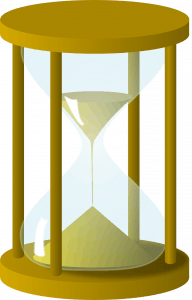Page caching is another method that can help you to improve the load time of your web pages and thus optimize your site for the search engines. Page load time can significantly impact your user experience and your site’s ability to convert visitors into buyers or into leads. In fact, experiments at Google have revealed that just a half second’s difference in load times can cause up to a 20% reduction in web traffic. For this reason, search engine companies are considering page load time to be an increasingly important factor for determining your site’s rank in the search results. This means you’ll need to take measures in reducing the size of your image files and your pages as a part of your SEO strategy.
Thankfully, methods such as GZIP file compression, file deflation, HTML file size optimization, and the use of external CSS style sheets and external Javascript files can help your pages to load faster and create a better user experience. In this article, we’ll be discussing yet another way to optimize your page load times and provide your visitors with a better user experience, thus increasing your chances of ranking well in the search results.
An Explanation of Page Caching and Its Benefits

Cached pages are served up as static HTML versions of a page in order to avoid potentially time-consuming queries to your database. Cached pages are created when search engine companies like Google store a “back-up” version of your page which can be served up to a user in place of the most recent version of your page. This is beneficial when serving the most recent version of a page requires accessing database information, which can take more time than serving up an already stored (cached) version of the page.
For example, in the screenshot below, the search results give the user an option of viewing the cached version of the website instead of the “live” version:
If the user chooses the cached version of the web page, they’ll be served a version of the page which will notify them that a more recent version of the page is also available and that they are viewing a cached version:
The benefit for the user of viewing a cached version of the page is that they can get the information they’re looking for quicker. In fact, page caching can lower server load by up to 80%. This is especially beneficial for high-traffic websites that make use of database information in order to serve the page to the user. Of course, the disadvantage of page caching is that the user isn’t viewing the most recent version of the page. However, for sites that don’t include dynamic features or add new information often, this is an optimal way for the user to view the site quickly.
Page caching also allows the user to view the cached version of the page just in case the current version is unavailable due to internet congestion, a recent removal of the web page, or if the web page is just taking a long time to load.
Types of Page Caching
There are three methods that can be used to caching your web pages:
1. Alternative PHP caching
Alternative PHP Cache (APC) is an open-source framework that caches data using intermediate PHP code. Most web programmers who are familiar with the PHP programming language can easily set up an Alternative PHP Cache for your site.
2. Quickcache
Quickcache is a lightweight page caching solution that was formerly known as jpcache. Quickcache caches the page output rather than compiling the PHP page, making it a superior version of page caching to the Alternative PHP caching. Quickcache can be quickly downloaded from their website and can reduce your page load time up to 80%.
3. WP Super Cache
If you have a WordPress website, WP Super Cache can be installed within seconds and without any programming knowledge.
Using Page Caching and Other Methods to Speed up Your Site
You can set up a combination of GZIP file compression or file deflation (which can reduce load times up to 70%) HTML file size optimization (which can reduce load times up to 30%) and the movement of your design features and Javascript to external CSS style sheets and Javascript files (which can potentially reduce your page load time 50% or more) and double or even triple the performance of your website which will provide your visitors with a better user experience.
If you prefer video, check out the following video tutorial on how to optimize your page cache and speed website performance.
Thank you for reading. Continue your journey of learning through our site SEOSiteCheckUp.com. Don’t forget to take advantage of our free SEO tools!
Join us in our daily discussions on Facebook!
